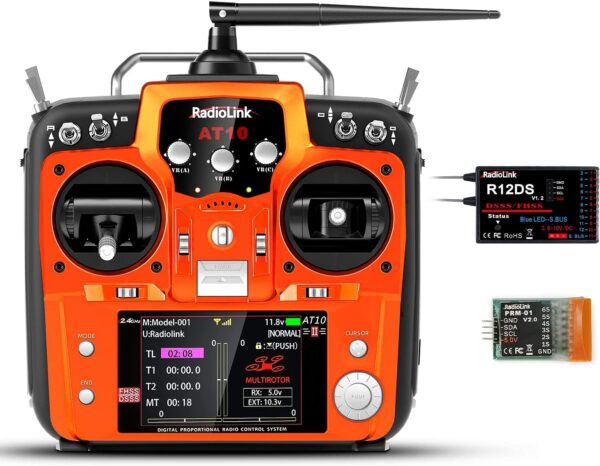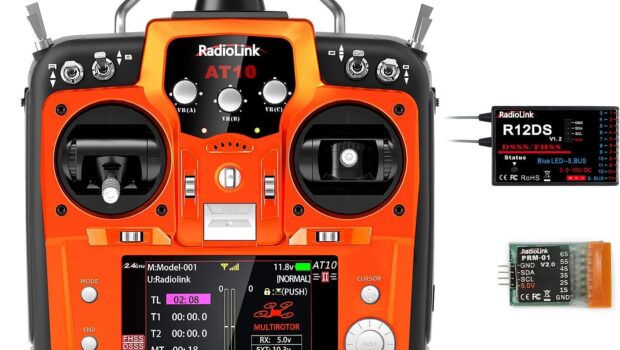Transmitting Excellence: Tips for Optimizing Your RC Transmitter and Factors to Consider When Buying One
Remote control (RC) enthusiasts know that the transmitter is the key to controlling their vehicles with precision and finesse. Whether you’re a drone pilot, RC car racer, or model airplane enthusiast, optimizing your transmitter can significantly improve your overall experience. This article explores tips for optimizing your RC transmitter and factors to consider when purchasing one.

Understanding RC Transmitters
A Remote control transmitter sends signals to your remote-controlled vehicle’s receiver. The receiver interprets these signals and translates them into commands for the vehicle’s servos and motors. The transmitter and receiver communicate via radio frequency (RF) waves. The performance of your RC vehicle largely depends on the quality and functionality of the transmitter you use.
Tips for Optimizing the Transmitter
Update the Firmware
Transmitter firmware is the software running on your device. Manufacturers often release updates that include new features, performance improvements, and bug fixes. Keeping your transmitter’s firmware up-to-date ensures you’re taking advantage of the latest technology and making the most out of your device.
Customize the Settings
Every RC vehicle is unique, and optimizing your transmitter’s settings can help you achieve better control and responsiveness. Adjust the steering and throttle rates, exponential settings, and trim settings according to your preferences and the specific requirements of your RC vehicle. Experimenting with different configurations will help you find the perfect setup. Some RC transmitters will even have manufacturer-configured settings available to download to get you started.
Use Quality Batteries
The performance of your transmitter is closely tied to the quality of its power source. Invest in high-quality, rechargeable batteries with a long runtime to ensure consistent and reliable performance. Remember to charge your batteries before each use and replace them when they show signs of wear.
Maintain a Clean Transmitter
Dirt, dust, and debris can interfere with the transmitter’s buttons and switches, leading to erratic behavior and reduced performance. Regularly clean your transmitter using a soft brush or compressed air to keep it in optimal condition. Keeping it in a protective case when not in use or during transport will help, too.
Utilize Dual Rates and Exponential Functions
Dual rates allow you to adjust the sensitivity of your controls, while exponential functions let you change the response curve of the transmitter’s input. These features can help you fine-tune the performance of your RC vehicle, making it more precise and easier to control.
Factors to Consider When Buying an RC Transmitter
Number of Channels
RC transmitters come in various channel configurations, ranging from 2 to 18 or more channels. The number of channels you need depends on the complexity of your RC vehicle and its functions. A simple RC car may only require two channels (throttle and steering), while a sophisticated drone may need six or more channels to control all its features. Additional electronic features like lights, sounds, winches, and cameras may all require additional channels.
Frequency Band
Most modern transmitters operate on 2.4 GHz frequency bands, which provide a stable connection and eliminate the need for frequency crystals. However, older models may still use 27 MHz, 72 MHz, or 75 MHz frequency bands. Make sure to choose a transmitter compatible with your receiver and the regulations in your country.
Transmitter Range
The range of your transmitter determines how far you can control your RC vehicle. A greater range allows you to fly or drive your vehicle at greater distances without losing control. Consider the environment you’ll be using your RC vehicle in and choose a transmitter with a suitable range.
Stick Mode
Transmitters come in various stick modes (Mode 1, Mode 2, Mode 3, and Mode 4), determining the control layout. The most common mode in North America is Mode 2, with the throttle on the left stick.
Ergonomics and Build Quality
Your transmitter’s ergonomics and build quality can greatly impact your RC experience. A comfortable grip and well-placed controls can make it easier to operate your vehicle for extended periods. Additionally, a well-built transmitter will be more durable and able to withstand occasional mishaps.
Conclusion
Optimizing your RC transmitter can significantly enhance your remote control experience, allowing for greater precision and control over your vehicle. You can make an informed decision when purchasing a new transmitter by considering factors such as the number of channels, frequency band, transmitter range, stick mode, ergonomics, and price. Remember to maintain your transmitter and update its firmware regularly to ensure optimal performance. With the right transmitter and proper optimization, you’ll be on your way to achieving excellence in your RC hobby.










![The Ultimate Email Marketing Checklist! [Infographic]](https://technofaq.org/wp-content/uploads/2018/06/check-list-infographic-150x150.png)




